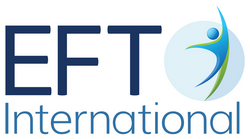Soma-Body-Mind Approach

Mind - Body
Whilst discovering the power of the body Sonia faced her own health issues and embarked on studying 2 techniques to maximise her ability to treat clients holistically.
Kinesiology
Kinesiology is a complementary therapy based on the theory that manual muscle testing can provide information about imbalances and stresses in the body. A Kinesiologist does not diagnose or treat; instead they work with the client to explore how to bring the body back into balance. This may involve massaging specific points, providing suggestions such as nutritional supplements, relaxation techniques, lifestyle changes, flower essences and more.
In a kinesiology session, the client remains fully clothed. The Kinesiologist will place the client's arm or leg into a specific position and will apply a light pressure against the muscle that is being tested while the client is asked to match the pressure. At no time should the client experience pain or discomfort with the testing.
Kinesiology is a relaxing, non-invasive therapy, which encourages a sense of wellbeing. As such it may be helpful to those seeking relief from a range of minor symptoms and to ease emotional, physical or mental stress.
ART
I use Autonomic Response Testing (ART) as taught by Dr Dietrich Klinghardt, M.D., PhD.
Dr. Klinghardt developed this technique with the help of Louisa Williams, MC, DC, ND and Yoshiaki Omura, MD.
ARTesting is an extremely efficient way of evaluating the body's autonomic nervous system's response to a specific stressor or a group of stressors. The Autonomic Nervous System (ANS) is the portion of our nervous system that requires no conscious thought and functions automatically throughout the day. Balance of the body is controlled by two portions of the ANS the first being the Sympathetic Nervous System (SNS), which is the nervous system that is dominant during times of stress (mental, physical, and chemical). The second part of the ANS is known as the Parasympathetic Nervous System (PNS), which is dominant during times of relaxation or deep altered states. We need both of them working equally to maintain a proper tone within the body.
The ANS helps to control the beating of our hearts; the rise and fall of blood pressure; the detoxification of the body's poisons; the digestion, assimilation, and elimination of our foods; the balancing of all our hormones; proper immune system responses; proper blood sugar levels; maximum brain function; and every automatic function of the body's organs and glands.
ART gives us a way of evaluating what stressor(s) are interfering with proper function of the ANS. These stressors could come from our external environment such as infectious agents, environmental toxins, or food allergies. They might also arise internally and manifest as glandular/hormonal imbalances, brain/neurotransmitter imbalances and old injuries with broken-down cellular communication.
The ANS receives information from our biofields. Our body's biofield is an accumulation of electromagnetic energies emitted from all of our cells, tissues, organs, and glands. Although the body's biofield (infrared spectrum of light) is not visible with the human eye, it is detectable with some very sophisticated and sensitive equipment. This biofield, or light field, is produced and emitted by the body and through some very peculiar properties of light; it is also carrying information from our surroundings, in the form of electromagnetic signals, back into the physical body. The ANS then has an opportunity of responding to that electromagnetic/stress signal.
Other stressors that can be evaluated with the use of ART include transgeneration thoughts, destructive emotions, environmental allergies/sensitivities, dental problems (such as incompatible dental materials and chronic infections), geopathic stress, and electromagnetic frequency stress (cell phones, cell phone towers, microwaves, un-insulated home power wires).
Using ARTesting to perform all of the testing mentioned above can actually be accomplished within a very short period of time.
Because there are no two of us exactly alike, the treatment will vary with each individual. ART is also very effective in helping the practitioner to detect the uniqueness in each patient and help to determine the most efficacious treatment plan. Although the diagnosis might be very similar between patients, it is extremely rare that any two individuals receive exactly the same treatment protocols. We are all clinically, genetically, socially, environmentally, and fundamentally unique.
Autonomic Response Testing is one of the most reliable and accurate forms of muscle testing
ART uses tools such as polarized light filters, signal enhancers (amplifies the light field and the electromagnetic signals), and therapy localization to detect aberrations in these body regulation procedures.
Nutrition
The basis of nutritional therapy
Nutritional therapy is the application of nutrition science in the promotion of health, peak performance and individual care. Nutritional therapy practitioners use a wide range of tools to assess and identify potential nutritional imbalances and understand how these may contribute to an individual's symptoms and health concerns. This approach allows them to work with individuals to address nutritional balance and help support the body towards maintaining health. Nutritional therapy is recognised as a complementary medicine. It is relevant both for individuals looking to enhance their health and wellbeing and for those with chronic conditions wishing to work with or 'consult" a nutritional therapist in collaboration with other suitably qualified healthcare professionals.
Practitioners consider each individual to be unique and recommend personalized nutrition and lifestyle programmes rather than a 'one size fits all" approach. Practitioners never recommend nutritional therapy as a replacement for medical advice and always refer any client with 'red flag" signs or symptoms to their medical professional. They will also frequently work alongside a medical professional and will communicate with other healthcare professionals involved in the client's care to explain any nutritional therapy programme that has been provided.
What a nutritional therapy session typically involves?
Before the first consultation, the practitioner usually provides a health and nutrition questionnaire for the client to complete. An initial consultation typically lasts 60 to 90 minutes, and in this time the practitioner asks detailed questions about current health concerns, symptoms, diagnosis and treatment, medical history, family history, lifestyle, levels of physical activity, use of medication and supplements and diet. The practitioner then evaluates individual needs and uses the extensive evidence base for nutritional science to develop a personalised, safe and effective nutrition and lifestyle programme.
Follow up consultations are generally after four weeks in order to monitor progress and make any necessary adjustments. Further follow-ups may be required depending on each individual situation.
Related Pages

Nutrition
NutritionThe basis of nutritional therapyNutritional therapy is the application of nutrition science in the promotion of health, peak performance and individual care. Nutritional therapy practitioners...read more >>

Kinesiology
KinesiologyKinesiology is a complementary therapy based on the theory that manual muscle testing can provide information about imbalances and stresses in the body. A Kinesiologist does not diagnose or...read more >>
ART - Autonomic Response Testing
ARTI use Autonomic Response Testing (ART) as taught by Dr Dietrich Klinghardt, M.D., PhD.Dr. Klinghardt developed this technique with the help of Louisa Williams, MC, DC, ND and Yoshiaki Omura, MD.ART...read more >>
Next Previous Blog/News
posted in Body on 18 December 2020
I heard that some people don't know what to do with all the time on their hands during this "stay home, stay safe" period. Others have begun amazing new hobbies or are running around with their hair on fire juggling work from home, homeschooling, hom...
Next Previous Testimonials
Very Supportive and Empowering
"I suffer from a long-term sciatic problem that is severe and causes a good deal of pain. I have been working with Sonia for three months and my core strength has improved, as has all the muscle strain around the weak part of my spine. My osteopath says that he feels a real improvement. I love my sessions with Sonia, they are always varied and especially tailored to fit my very particular needs. She is thorough, kind and attentive. I have recommended her widely and will continue to do so." Jennifer S
Beyond a Workout
"I have always been very active having played a number of sports to a very high standard. My focus has always been on strength and fitness and I realised after a couple of minor injuries that I had neglected some key principles. Working with Sonia was of course very different to working out in a gym or to any other training regime I had been involved in but it has so far had a huge impact on everything that I do - from walking to the tube and avoiding recurring foot injuries to my posture at work and also in the gym. I have learnt things about my body that I never knew and I now wish I had known before. I thought her style of pilates would be interesting and a change from my normal workouts but it has had a much deeper impact than I could have imagined. I now know so much more about my body and can put that knowledge to use in my workouts and everyday fitness regime. Just because you go to the gym 3 times a week does not mean you don't "need" Sonia - in fact I would suggest the opposite. In addition to this, on a personal level, Sonia always makes her sessions interesting. She is an interesting and engaging person who will make an introduction to Pilates Yoga or Somatic Movement a most worthwhile experience and even experts will benefit from her broad knowledge about the body and the mind. I couldn't recommend Sonia more highly to everyone, of all ages and all levels of fitness and experience." Graham H







